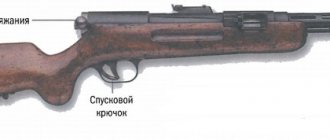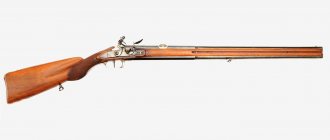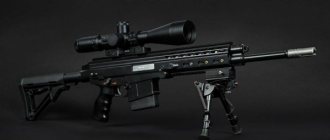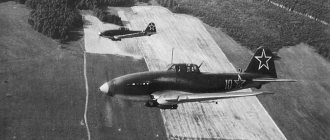The Czech Armory produces a wide range of small arms. One of the most popular and sought-after pistol models on the global arms market is the 9-mm combat pistol CZ-75SP, which was developed by CZ in 1975.
The CZ-75 pistol is very popular not only among European law enforcement agencies and intelligence agencies, but also among the civilian population. It is suitable for both self-defense and sport shooting. Many modifications allow you to choose a pistol that best suits the characteristics of a particular user. For example, the most popular model for sports shooting is the CZ-75 “Shadow”. It is distinguished by a black coating of the body, for which it received the name “Shadow”.
The history of the appearance of the CZ-75SP pistol
The CZ-75 pistol was developed by Czech designers the Koucki brothers. Since the development of the arms industry in Europe involves the creation of only weapons that are in demand on the market, the new Czech pistol was created with special care. The new pistol was supposed to be a replacement for large pistols, which in those years were widely used by intelligence services and law enforcement agencies around the world.
Unlike other countries of the socialist camp, which blindly copied Soviet weapons, the Czech Republic managed to preserve its centuries-old traditions of producing high-quality small arms. It is for this reason that weapons produced in Czechoslovakia were in demand in Europe and the USA. The new pistol, mass production of which began in 1977, was developed for the 9x19 Parabellum cartridge; it was for this reason that it was not adopted by the Czechoslovak Army.
The first official show of the CZ-75 took place in Madrid in 1976. The new model from the famous Czech manufacturer managed to attract the attention of the public, so within a year its mass production began. In the first years of production, stable exports were established to a number of European countries.
Soon after release, the pistol was released in a reinforced modification, designed to use more powerful cartridges, and then other models were added to the line of pistols. Czech gunsmiths, despite the difficult times for the country, did not follow the path of least resistance and did not blindly copy Soviet weapons. Thanks to their heroic efforts, the Czech weapons school was able to survive and now delights its fans around the world with high-quality models of small arms.
Features of the CZ-75 device
The unique Czech pistol has the following design features, which made it popular among intelligence agencies around the world:
- The designers took a big risk when developing in 1975 a pistol chambered for the 9x19 Parabellum caliber, which in those years was not even adopted by the Czech army. As time has shown, this decision turned out to be very far-sighted;
- The double-row box-type magazine holds 15 rounds. This is an impressive figure for a weapon of this class;
- Although pistols made of heat-resistant plastic were gaining popularity around the world, Czech designers decided not to deviate from tradition. Their pistol has a body made of high-quality high-carbon steel. Since steel of this grade tends to rust, the case has a high-quality blued finish. In addition, chrome and nickel plated models are available. For the USA, the CZ-75 is manufactured with a stainless steel case;
- Despite the high quality of serial pistols, their price places these weapons in the budget price segment.
The first model, which was presented at the 1976 exhibition in Madrid, was slightly different from the modern versions of the CZ-75. It had a smooth trigger guard coating and narrowed front parts of the bolt.
Currently, Cesská Zbroevka produces gift versions of the CZ-75. They differ in the following features:
- The pistol's slide and frame are beautifully hand-engraved;
- Plastic handle linings have been replaced with walnut ones;
- Some external controls have high quality gold plating.
In addition to the gift version, there is also a specialized army version. It also has walnut grips and its hammer has a rounded head.
Technical characteristics of CZ 550 carbines
CZ 550 Standard
- Caliber: .308 Win / 7x64 / .30-06 Springfield
- Barrel length: 600 mm
- Total length: 1135 mm
- Height: 195 mm
- Width: 86 mm
- Weight without cartridges: 3.3 kg.
- Magazine capacity: 5 rounds
The CZ 550 Hunter carbine is designed for high-precision shooting at long ranges. Firing accuracy is achieved due to a special design for attaching the barrel to the receiver. The stock is made of high quality walnut. The rifle comes with a one-piece aluminum scope mount with a 30mm center tube diameter.
CZ 550 Hunter
- Caliber: .300 Win Mag
- Barrel length: 600 mm
- Total length: 1135 mm
- Height: 195 mm
- Width: 86 mm
- Weight without cartridges: 3.95 kg.
- Magazine capacity: 4 rounds
Finished in Realtree camo, the CZ 550 Predator Carbine is available as both a standalone rifle and an accessory kit.
The kit includes:
- optical sight CZ 3-12x56 with R12 reticle in Realtree camouflage
- sight mount - 2 steel rings with a diameter of 30 mm
- hunting shoulder bag - Realtree camouflage
CZ 550 Predator
- Caliber: .308 Win / 7x64 (fixed magazine) / .30-06 Springfield
- Barrel length: 600 mm
- Total length: 1135 mm
- Height: 195 mm
- Width: 80 mm
- Weight without cartridges: 3.9 kg.
- Magazine capacity: 5 rounds
The CZ 550 FS carbine has a classic full walnut stock with a steel tip in the front sight area, a Bavarian butt cheek, checkering and a ventilated rubber butt pad.
CZ 550 FS
- Caliber: .308 Win / .30-06 Springfield / 8x57 / 9.3x62 (fixed magazine)
- Barrel length: 520 mm
- Total length: 1055 mm
- Height: 210 mm
- Width: 80 mm
- Weight without cartridges: 3.3 kg.
- Magazine capacity: 5 rounds
Magnum series carbines are offered in the largest calibers. The design is designed for use in extreme climates and challenging situations.
CZ 550 Magnum
- Caliber: .375 H&H Magnum / .416 Rigby / .458 Win Mag (fixed magazine)
- Barrel length: 635 mm
- Total length: 1180 mm
- Height: 210 mm
- Width: 85 mm
- Weight without cartridges: 4.2 kg.
- Magazine capacity: 5 / 3 / 4 rounds
The CZ 550 Lux carbine has a walnut stock with a Bavarian-style cheek piece, checkering and a rubber butt pad.
CZ 550 Lux
- Caliber: .243 Winchester / .270 Winchester / .308 Winchester / 7x64mm / 6.5x55 / .30-06 Springfield / 8x57 IS (fixed magazine)
- Barrel length: 600 mm
- Total length: 1135 mm
- Height: 210 mm
- Width: 80 mm
- Weight without cartridges: 3.3 kg.
- Magazine capacity: 5 rounds
The CZ 550 Varmint carbine is equipped with a walnut stock without a cheekpiece, with checkering and a rubber butt pad. There are no open sights. A sports-style barrel with increased thickness and length of 650 mm. Available calibers: .308 Winchester
CZ 550 Varmint
- Caliber: .308 Winchester
- Barrel length: 650 mm
- Total length: 1185 mm
- Height: 195 mm
- Width: 70 mm
- Weight without cartridges: 4.2 kg.
- Magazine capacity: 4 rounds
Sometimes users receive complaints that during prolonged shooting the barrel gets very hot and the point of impact moves. However, it should be taken into account that a carbine specially adapted for hunting conditions is not intended for long-term shooting. When hunting, you need a weapon that is comfortable to carry for long periods of time, and to reduce the weight of the carbine you have to sacrifice the thickness of the barrel. This does not affect the accuracy of shooting in any way; all five bullets from five cartridges in the magazine will fly exactly where the hunter sent them. If you want to practice shooting for a long time, firing at a target at a fast pace, you need to purchase a weapon with a thick barrel. This is, for example, the CZ550 Varmint carbine, which has a thicker barrel, but its total weight is 4 kg, instead of 3.3 kg for the Standard model. And an extra 700 grams on some types of hunts is sometimes simply unacceptable. And this applies not only to CZ weapons, but also to all other carbines from other manufacturers.
Most of the shortcomings attributed to the CZ 550 carbines, such as the bolt play in the rearmost position and the loud click of the safety, can be eliminated with basic training in handling your weapon. Any malfunctions that arise should be repaired by an experienced gunsmith; do not try to “repair” or “improve” the carbine yourself without having the necessary knowledge and skills.
The article uses fragments of materials from the manufacturer’s official website - czub.ru.
Automation, trigger and other devices CZ-75
Like most modern pistols, the CZ-75 operates using automatic action, which is based on the principle of recoil with a short barrel stroke. The breech of the barrel locks the channel, the lugs are located in the upper part of the barrel directly in front of the chamber.
The surface of the shutter-casing has special grooves intended for lugs. The shutter-casing moves along special guides, which are located inside the frame. This system has long proven itself to be reliable, and when made by Czech gunsmiths it works perfectly without any additional modifications.
The double-action trigger mechanism is of the hammer type. The trigger can be cocked to the safety cock. In order to simplify the maintenance of the CZ-75, Czech designers placed the trigger mechanism in a separate block, from where it can be easily removed.
The firing pin is of an inertial type, and the ejector with an open arrangement can simultaneously serve as an indicator for checking the presence of ammunition in the chamber.
The safety on the Czech pistol complies with international standards and ensures complete safety for the owner. It blocks not only the shutter-casing, but also the sear. In order to activate the safety, you need to turn the lever, which is located on the left side of the frame above the handle itself. On the same side there is a bolt stop lever and a magazine release.
The non-adjustable front and rear sights, which are classic for automatic pistols, are installed as sighting devices. The rear sight, which is fixed in the classic dovetail position, can be adjusted by making lateral adjustments.
The shooting accuracy of the CZ-75 pistol is due to the use of the Charles Peter mechanism. This mechanism ensures the movement of the shutter-casing along special guides that are located inside the frame. This system ensures that the shutter moves without play, which is what ensures accuracy when shooting.
Czech, convenient and successful... pistol CZ 27
It always happens that a well-made thing evokes a lot of imitations, and often the imitations are not only in no way inferior to the original, but even surpass it in some ways. So at the very beginning of the 1920s, the Czechoslovak army decided to test a new self-loading pistol designed by the German gunsmith Nikl, who worked for. And the pistol turned out to be so successful that the Czechoslovak military decided to adopt it, although it was designed for the new (for the Czechoslovak army) pistol cartridge 9-mm Vz.22, also called 9x17 Browning Short, that is, “short”.
The pistol had an original design with a rotating barrel and a bolt linked to it, so it was complex, and the pistol itself turned out to be very expensive to produce. And although an improved version was introduced in 1922, the company managed to produce only 35,000 Vz.22 and stopped its production in 1926. Therefore, in 1924, the Vz.24 model was adopted, improved by Czech engineers. The Vz.24 was similar in appearance to its predecessor, but differed only slightly (for example, the magazine release button was different), but its main difference was the caliber of the new pistol: it was chambered for the more popular 7.65 mm cartridge. Production of the new model began in June 1926 at a new plant, and by 1937 approximately 190,000 of these pistols had been produced. But the complex mechanism of the Vz.24 pistol remained a “tough nut to crack” for production workers. To some extent, its shortcomings were eliminated only later on the Vz.27 model.
In Czechoslovakia, the Vz.24 was produced until the very end of the thirties as a standard pistol of the Czechoslovak Army and right up to the very beginning of the Second World War, and was also exported. After the German occupation of Czechoslovakia, this pistol was produced in small series, but in 1944 its production ceased completely.
CZ 27 / P.27(t), produced for the needs of the Wehrmacht, as evidenced by the markings on the bolt casing.
Experts note that both Vz.22 and Vz.24 had an overly complex design for such a relatively weak pistol cartridge. I wanted something just as effective, but simpler. And such a model of a pistol was the CZ 27 / P.27(t), which is considered one of the most successful Czechoslovak developments among all other pistols, up to the CZ-75. Between 1927 and 1951, more than half a million of these pistols were produced, both for domestic consumption (in particular, they were used by police officers and security forces of the Republic of Czechoslovakia) and for export. During the Second World War, when the country was occupied by German troops, the production of these pistols continued, but in the interests of the German armed forces, where this pistol was assigned a special index P.27(t). Experts note that this pistol differed from many other systems in its very well-thought-out, durable and reliable design, and its main drawback was the use of a relatively low-power 7.65 mm Browning cartridge.
Pistol Vz.22 caliber 9 mm.
This cartridge was created in 1897 by the American gunsmith John Browning, who needed a pistol cartridge for a small-sized pistol. He took the .32 Smith-Wesson caliber cartridge used in revolvers as a basis and modified it accordingly. At the end of the same year, production of the new cartridge was started by the Belgian company.
Three years later, Browning designed a pistol for this cartridge - his famous FN Browning M1900. In 1903, the patent for this ammunition was purchased, changing its designation, so that it became known as .32 ACP.
Since then, this ammunition has been considered perhaps the most common pistol cartridge in the whole world. It is clear that in terms of its characteristics it no longer meets the requirements of the 21st century, but... its serial production continues, and constant work is underway to improve it.
Let's take a closer look at the CZ 27 / P.27(t) pistol. It uses the automatic blowback operating principle, like the well-known Makarov pistol. But the barrel of a Czech pistol is not connected to the frame, although it remains motionless when firing. However, when disassembling the pistol, it can be separated from its frame, and the return spring is located in it under the barrel. The trigger mechanism has a single action trigger. The trigger is almost entirely recessed into the bolt casing, but you can press it out with your finger. There is a round hole in the trigger spoke. The safety is very unusual, it cannot be confused with anything: it is located on the left side of the frame, immediately behind the trigger. And he... double! That is, in order to turn on the fuse, you need to press down a small lever, but in order to then remove it from the fuse, you need to press the button located below this lever. There is no way to confuse what to press where: “from top to bottom, then press” - it seems complicated, but in reality this method turns out to be quite convenient. The magazine in the handle is single-row, with a latch at the base of the handle, immediately behind the magazine well. It is believed that with this placement of the latch, the reload time of the pistol increases, but it also minimizes spontaneous detachment and the magazine falling out. The magazine capacity is 8 rounds, which was traditional for pistols of those years. The handle has a straight front edge and a curved back edge. Plastic cheeks with the company logo in a circle.
As you can see, there are practically no protruding parts on the pistol, so it is very convenient for concealed carry.
The creator of the pistol was engineer Joseph Nikl. Industrial production of this pistol was carried out from 1927 to 1955. When Czechoslovakia was occupied by the Germans, its production continued to arm police units and Wehrmacht officers. But even after the Second World War ended, its production continued. It is believed that from 620 to 650 thousand pistols were produced (with 452,500 units produced during the years of German occupation), and according to other sources, as many as 700 thousand.
There is information that the CZ 27 pistol (another designation Vz.27, from Vzor - model) appeared as the result of the work of the Czech engineer Frantisek Myshka, who simplified the design of the CZ 24. Now it worked according to the blowback recoil scheme, and instead of the 9-mm cartridge used “short” it used 7.65 mm Browning. Externally, its design is distinguished by the presence of flat side planes and characteristic vertical notches on the shutter casing. The barrel is fastened using the “cracker method”. The force on the trigger is approximately 1.9 kg, while its stroke is smooth and the return stroke is short.
The front sight is non-adjustable, and the rear sight is fixed in a dovetail groove, so that lateral adjustments are possible. The rear sight has a fairly large V-shaped slot, allowing you to clearly see the front sight. Such sighting devices provide effective operation at a distance of up to 15 meters, that is, this is more than enough for a weapon of this caliber. Moreover, at this distance it provides the possibility of hitting a circle with a diameter of no more than 50 - 55 mm. The new pistol was adopted by the Czechoslovak police and state security services, and was also distributed on the civilian arms market.
Even compared to the design of modern pistols, this weapon looks good.
The first Vz.27 pistols were at the disposal of the German army after the occupation, and there they appreciated them in the same way and continued production under German control. It was used in the German army from 1939 to 1945, and some of the Pistole 27(t) samples were adapted for use in conjunction with a silencer. To do this, the barrel of the pistol was made elongated to 135 mm, so that its muzzle protruded from the bolt casing, which had a thread for attaching a muffler to it. As already noted, the pistol was small in size and weight, and its main disadvantage was considered to be the not very impressive effect of the bullet due to the cartridge used in it. But all experts note excellent shooting accuracy.
Personal impressions of the pistol are that it is “very flat, smooth and comfortable” to hold in the hand. It fits very comfortably. Even a hand with short fingers grips the handle with great comfort. The pistol is not heavy and is easy to control. Of course, in order to talk about a pistol as a weapon, you need to shoot with it (holding on to it is not enough!), and not just with it, in order to compare certain samples. But nevertheless, it is possible to get a certain impression in this way. I would note that the Vz.27 is very convenient to carry in the inside pocket of a jacket and is convenient to take out from there, it does not cling to anything and is not too long. In general, it is not surprising that it was used by Czechoslovakian security agents.
And this is how it is held in the left hand. As you can see, it is quite comfortable to hold it, which means it is convenient to shoot.
In the USSR, this pistol ended up as trophies, i.e. obtained from killed German officers. The Czechoslovak partisans, who were accustomed to their native weapons, also used them. Modern filmmakers should also remember this, that is, it is quite possible to use this Czechoslovak pistol in some of the films about the war and post-war crime.
Main characteristics Caliber: 7.65 mm Browning Pistol length: 155 mm Barrel length: 99 mm Pistol weight without cartridges: 670 g Magazine capacity: 8 rounds
The effectiveness of the CZ-75 pistol
The effectiveness of combat use is due to the use of powerful 9x19 Parabellum caliber ammunition. To perform more specific tasks, special forces armed with CZ-75 pistols use reinforced ammunition or cartridges with armor-piercing or hollow-point bullets.
The handle shape was completely copied from the FN Browning High Power, which became a legend long before the appearance of the CZ-75. In addition, the angle of the pistol also provides convenience when shooting.
The popularity of the Czech pistol is due not only to its technical characteristics. Large ammunition capacity allows you to fire the pistol for a long time.
Variety of modifications of the CZ-75
Since the pistol quickly gained worldwide popularity, the manufacturer immediately responded to this by releasing new modifications. This was done in order not to lose customers, since competitors release some improved model to the market every year. The main modifications of the CZ-75 are the following pistols:
- CZ-75BD - this model was released after Ceska Zbroevka began receiving complaints about the use of a flag fuse in the system. The model has a docker, which replaced the fuse switch;
- CZ-85 is a model adapted for left-handers. At the same time, it is equally convenient for right-handers, since the slide stop and safety levers are available on both the right and left sides;
- The CZ-75 "Kadet" is a small-caliber version of the pistol. This model uses .22LR ammunition. The name “Cadet” suggests that the purpose of this pistol is to teach the basics of shooting to teenagers and cadets;
- The CZ-75 FA is a very interesting modification that has the ability to fire in bursts. Externally, this model is distinguished by the presence of a long barrel;
- CZ-75 P-01 is a modification with an aluminum alloy frame;
- CZ-75 SP-01 “Tactical” – the so-called “tactical” modification. It is distinguished by the presence of a Picatinny sighting rail;
- The CZ-75 Standard IPSC is a dedicated competition model.
In addition, there are numerous copies of this weapon. One of the most famous is the Chinese Norinco NZ-75.
Brief review of the CZ 557 308 win using the Lux model as an example
The design of the CZ 557 Lux 308 win carbine corresponds to the tastes of Central European hunters: a steel receiver, an open large sight, a classic-shaped stock. The weapon is well balanced and the bolt handle provides a secure grip. Removal of the safety lock is determined by the red marking that appears.
To allow the carbine to be quickly unloaded, the magazine cover is hinged. A weapon with a thick-walled barrel is not multifunctional: it is not for sport hunting, is not very suitable for ambushes, and is not entirely suitable for training shooting ranges. Lux is a typical hunting carbine, most suitable for hunting in Germany, quite budget-friendly.
CZ557 Lux II 308Win
The walnut stock is made very modestly, but boasts a curled structure. To prevent aggressive environmental influences, the wood is smoothly sanded and impregnated with special oil.
The handguard and pistol neck are decorated with a neat grille. The fore-end is rough, tapering slightly towards the clearly defined nose. The stock is equipped with a boar's back comb and the ergonomic neck is noticeably inclined. At the end of the neck, copying the Old English style, there is a black gasket with a narrow rubber butt pad. The gun belt is mounted on non-removable swivels.
CZ 557 Ranger
In which countries do intelligence agencies use the CZ-75?
High reliability, combat qualities and a huge number of positive reviews are the reason that the pistol is in service with the intelligence services and law enforcement agencies of many countries. Here is a partial list of countries where it applies:
- Georgia. In this country, the CZ-75 is actively used by the national army;
- In Egypt, a large batch of Czech pistols (80,000 pieces) entered service with local law enforcement agencies;
- Kazakhstan is purchasing CZ-75 for its special forces. In addition, pistols of the Czech army are used as award weapons;
- In Lithuania it is used in the army;
- The Polish police are armed with pistols of this model;
- In Russia, this pistol is used by employees of the prosecutor's office and the Ministry of Justice. Since 2011, it has also become a reward weapon;
- In Slovakia and Slovenia it is used by special units of local police;
- In the United States, it is in service with the famous Delta group; in addition, police officers in a number of states are armed with similar pistols;
- Ukraine purchased a batch of Czech pistols for the Cobra special group;
- In the Czech Republic it is in service with the police.
In recent years, Asian states have actively begun to purchase CZ-75 for their intelligence services.
The CZ-75 is a high-quality and inexpensive short-barreled weapon that has gained popularity all over the world. This pistol is still in production, and Czech engineers are constantly working to improve the design of the pistol. Users with access to various CZ-75 models note that the options for the US market are made of higher quality than other modifications.
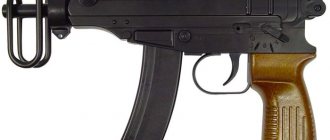
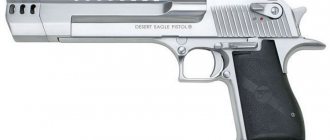
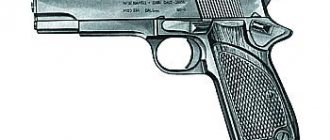
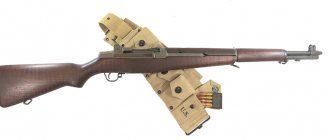
!['Domestic small arms [studio "Wings of Russia"] (2011)'](https://knifesburg.ru/wp-content/uploads/otechestvennoe-strelkovoe-oruzhie-studiya-krylya-rossii-2011-330x140.jpg)


